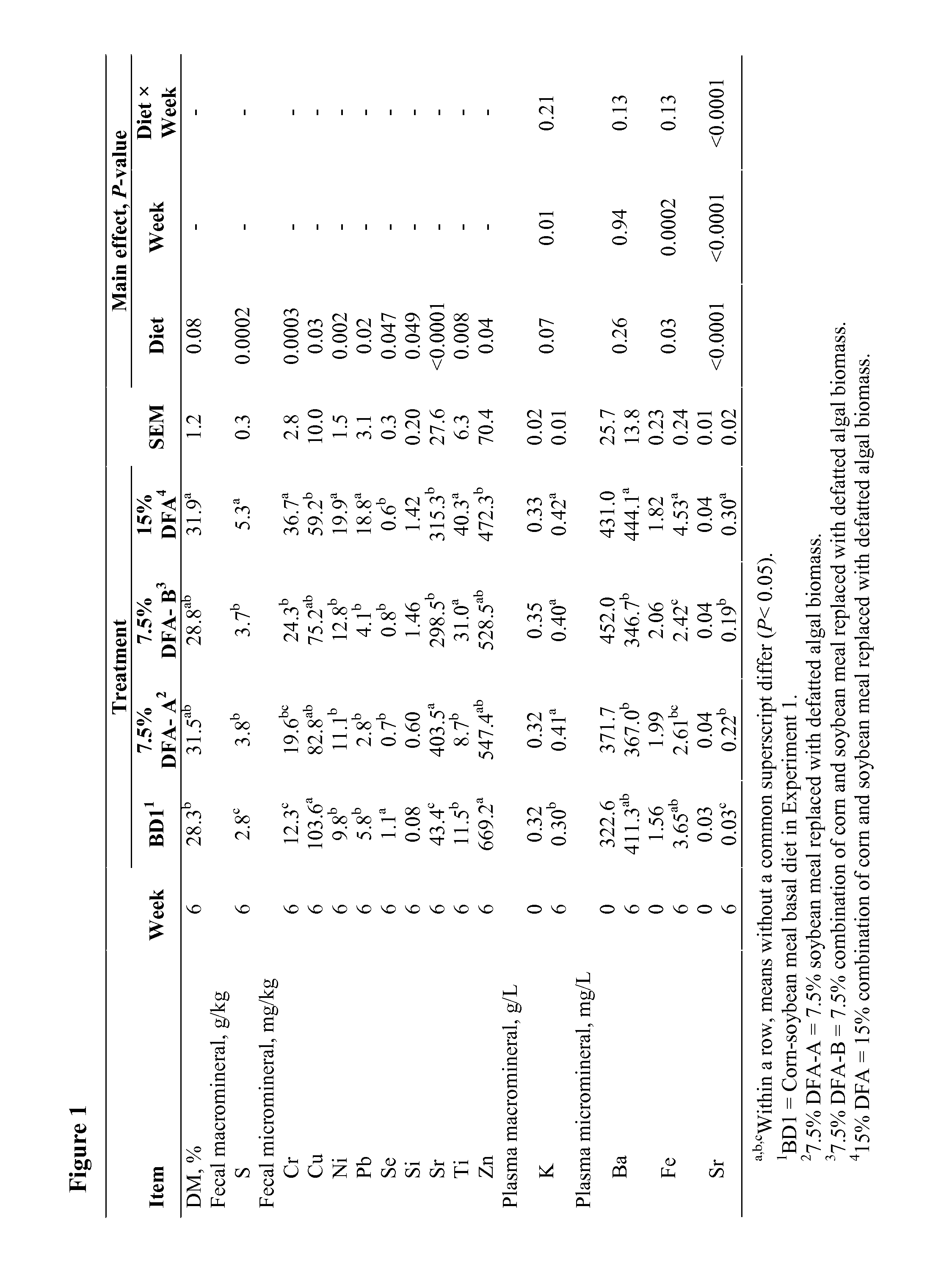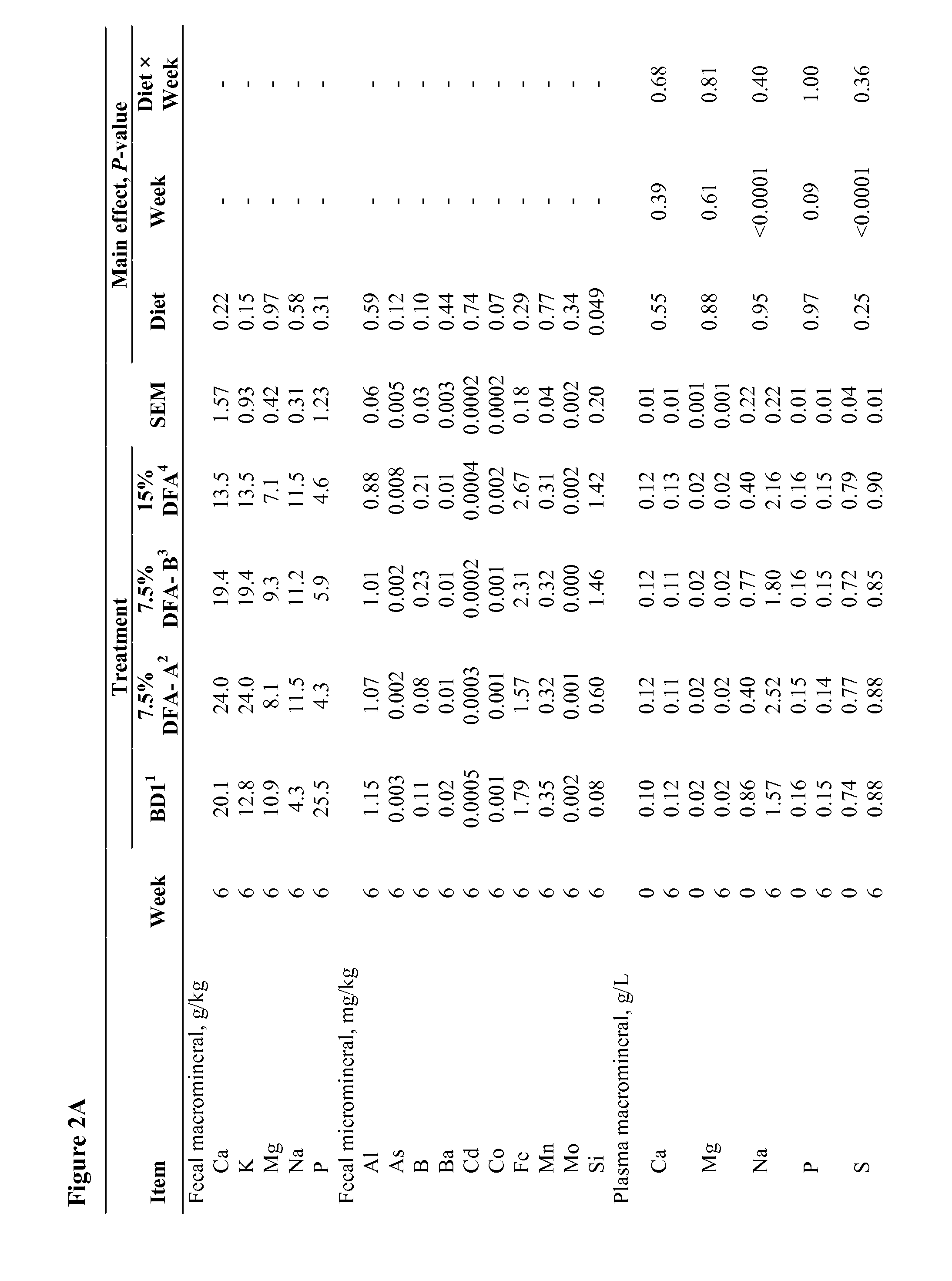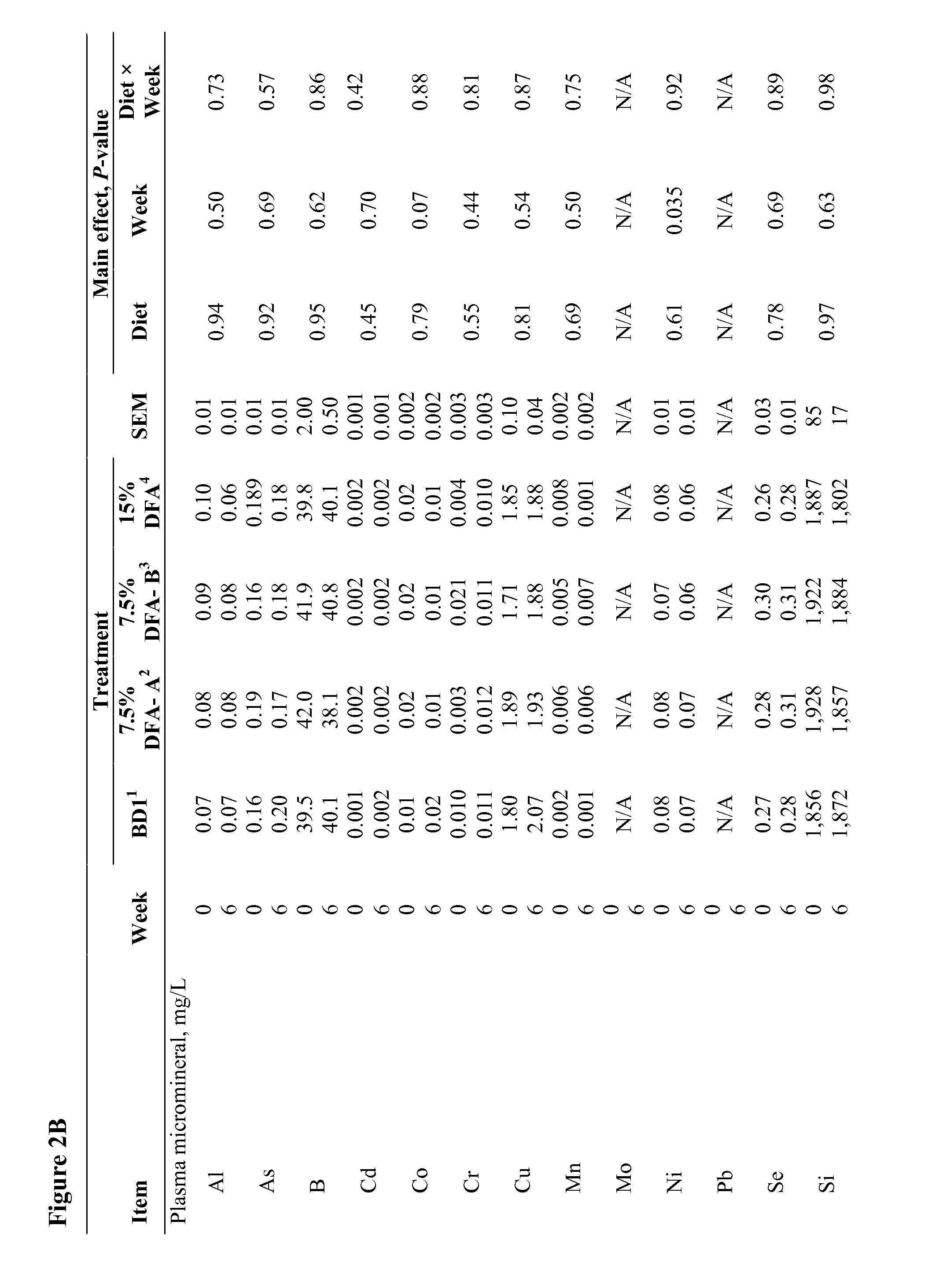Algal-based animal feed composition, animal feed supplement, and uses thereof
a technology of animal feed and composition, applied in the field of algal-based animal feed composition, animal feed supplement, can solve the problems of increasing the price of soybean meal, increasing the cost of soybean meal, and limited supply, so as to improve the feed efficiency of the animal, and reduce the level of plasma uric acid
- Summary
- Abstract
- Description
- Claims
- Application Information
AI Technical Summary
Benefits of technology
Problems solved by technology
Method used
Image
Examples
example 1
Microalgal Biomass Diet Supplementation Defatted and Full-fat Diatom Microalgal Biomass can Partially Replace Corn and Soybean Meal in the Diets of Weanling Pigs
[0084]Materials and Methods for Example 1
[0085]Animals and Dietary Treatments
[0086]The animal experiments were approved by the Institutional Animal Care and Use Committee of Cornell University. All pigs were weanling crossbreds (Yorkshire-Landrace-Hampshire) selected from the Cornell University Swine Farm. The pigs were weaned at 4 weeks of age, and allotted into treatment groups based on body weight, litter, and sex. The pigs were housed individually in pens (1×2.5 m) with concrete floors in a temperature-controlled barn (22-25° C.) with a light:dark cycle of 12:12 h. In both experiments, the pigs were adjusted for 4 days to a corn-soybean meal basal diet (“BD”) (BD1, BD2). All pigs had free access to feed and water, and were monitored daily.
[0087]A preliminary experiment was conducted to determine appropriate inclusion rat...
example 2
Defatted Diatom for Laying Hens: Dose-Dependent Effect of Defatted Diatom Biomass on Egg Production and Egg Quality of Laying Hens
[0114]Materials and Methods for Example 2
[0115]Animals, Dietary Treatments, and Management
[0116]A total of 100 ISA Babcock White Leghorn laying hens (47 weeks old, Gallus gallus domesticus) with an initial body weight of 1.57±0.20 kg, were randomly assigned to 4 dietary treatments. There were 5 replicates for each treatment and each replicate consisted of a row of 5 individually-caged hens in 60-cage units. The cages were equipped with nipple drinkers and trough feeders. The hen-house was provided with 16 hours of light per day and the hens were given free access to feed and water. The duration of the experiment was 8 weeks. The protocol for this research was approved by the Institutional Animal Care and Use Committee at Cornell University.
[0117]Defatted Staurosira sp. microalgal biomass used to prepare for the experimental diets was generated from the re...
example 3
Potential and Limitation of a New Defatted Diatom Microalgal Biomass in Replacing Soybean Meal and Corn in Diets for Broiler Chickens
[0141]Materials and Methods for Example 3
[0142]Animals, Diets, and Management
[0143]The protocols of all experiments were approved by the Institutional Animal Care and Use Committee of Cornell University. Hatchling Ross broiler chicks were obtained from a commercial hatchery and housed in a temperature-controlled room at the Cornell University Poultry Research Farm. The day-old broiler chicks were housed in thermostatically-controlled cage batteries for 3 weeks and were transferred to grower cages at room temperature from 3 to 6 weeks. Chicks had free access to feed and water and were provided with a lighting schedule of 22 hours light, 2 hours dark daily. Body weights were recorded at the beginning of experiments, and were recorded weekly thereafter, along with feed intake. The DFA of Staurosira sp. (Table 17) (Cellana, Kailua-Kona, Hi.) was included a...
PUM
| Property | Measurement | Unit |
|---|---|---|
| Fraction | aaaaa | aaaaa |
| Fraction | aaaaa | aaaaa |
| Fraction | aaaaa | aaaaa |
Abstract
Description
Claims
Application Information
 Login to View More
Login to View More - R&D
- Intellectual Property
- Life Sciences
- Materials
- Tech Scout
- Unparalleled Data Quality
- Higher Quality Content
- 60% Fewer Hallucinations
Browse by: Latest US Patents, China's latest patents, Technical Efficacy Thesaurus, Application Domain, Technology Topic, Popular Technical Reports.
© 2025 PatSnap. All rights reserved.Legal|Privacy policy|Modern Slavery Act Transparency Statement|Sitemap|About US| Contact US: help@patsnap.com



